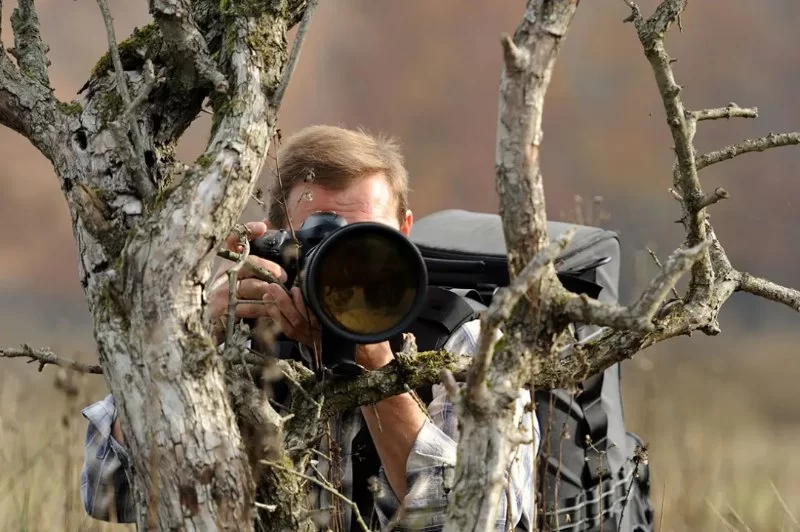Tips for Finding the Best Campsite for Wildlife Photography and Close Encounters
Wildlife photography is an art that requires patience, the right equipment, and, most importantly, the perfect location. One of the best ways to capture stunning wildlife moments is by camping in areas where you can experience close encounters with animals in their natural habitats. However, choosing the right campsite can be a challenge. In this article, we’ll guide you through some essential tips for selecting the best campsite for wildlife photography, ensuring that you get both the experience and the shots you’re hoping for.
- 1. Best Locations for Wildlife Photography Campsites
- 2. Timing and Seasons for Wildlife Encounters
- 3. Preparing for Close Encounters with Wildlife
- 4. Choosing Suitable Campsites for Photography
- 5. Capturing the Perfect Shot in Wildlife Photography
1. Best Locations for Wildlife Photography Campsites
When it comes to wildlife photography, the location is crucial. Certain national parks, nature reserves, and wilderness areas offer prime opportunities to observe animals in their natural settings. Here are some of the best types of locations to consider for your next wildlife photography camping trip:
1.1 National Parks and Reserves
National parks like Yellowstone, Banff, and Kruger are renowned for their abundant wildlife. These areas provide a variety of environments where you can photograph animals like bears, bison, elephants, and many more in their natural surroundings. Many parks have designated campgrounds close to popular wildlife viewing areas, giving photographers easy access to the action.
1.2 Remote Wilderness Areas
For a more intimate experience with wildlife, consider camping in remote wilderness areas. These regions tend to have less human interference, allowing for more natural animal behavior. Keep in mind that these locations might require a bit more effort to access and set up camp, but the rewards of photographing undisturbed wildlife are well worth it.
2. Timing and Seasons for Wildlife Encounters
The timing of your camping trip plays a significant role in the success of your wildlife photography. Different species are more active during specific times of the year, and understanding these patterns can help you make the most of your experience.
2.1 Best Seasons for Wildlife Photography
Spring and fall are often the best seasons for wildlife photography. During these times, animals are either coming out of hibernation or preparing for colder months, making them more active and visible. Additionally, the weather is typically milder, providing a more comfortable camping experience.
2.2 Timing Your Photography for Optimal Shots
Wildlife tends to be most active during the early morning and late evening hours, especially during the spring and summer months. These "golden hours" provide the best natural lighting for photography, resulting in softer, more flattering images of animals in their habitats.
3. Preparing for Close Encounters with Wildlife
While photographing animals from a safe distance is ideal, close encounters with wildlife are a thrilling part of the experience. However, it’s essential to be prepared and understand how to safely engage with the environment around you.
3.1 Understanding Animal Behavior
Before heading out, take some time to learn about the species you might encounter. Understanding their behavior, habits, and potential risks will help you react appropriately in different situations. For example, while some animals may be curious and approach humans, others may be territorial and dangerous when provoked.
3.2 Maintaining a Safe Distance
Even though wildlife photography often involves getting close to animals, it’s essential to respect their space. Follow guidelines for safe distances—especially with large predators like bears or wild cats. Use a telephoto lens to capture intimate shots without risking your safety or disturbing the animals.
4. Choosing Suitable Campsites for Photography
Not all campsites are created equal when it comes to wildlife photography. Some key factors to keep in mind when selecting your campsite include:
4.1 Proximity to Wildlife
Choose a campsite located near known wildlife areas or paths. Many parks and reserves provide maps that highlight hotspots where animals frequently roam. Set up camp in a location that offers unobstructed views of wildlife, ideally close to water sources where animals often gather.
4.2 Shelter and Comfort
While the goal of your camping trip may be to capture wildlife, remember that comfort matters too. Opt for campsites that offer good shelter, especially if you're camping in areas with extreme weather conditions. Having a safe, warm place to retreat to will make your photography experience much more enjoyable.
5. Capturing the Perfect Shot in Wildlife Photography
Now that you've found the ideal campsite and are ready for your wildlife photography adventure, it's time to make the most of your camera gear and skills. Here are some tips for capturing the perfect shot:
5.1 Choosing the Right Equipment
For wildlife photography, a long lens (typically between 200mm and 600mm) is essential for getting close-up shots without disturbing the animals. A fast, wide-aperture lens is also helpful for low-light conditions, such as early mornings or dusk. Don't forget to bring extra memory cards, batteries, and a sturdy tripod for stability.
5.2 Patience and Timing
Wildlife photography requires immense patience. Animals won’t always cooperate, so be prepared to wait for long periods. Keep your camera ready at all times, and pay close attention to animal behaviors. The more you observe, the more likely you are to capture a stunning moment.
5.3 Respecting the Environment
Finally, remember that nature is a fragile environment. Always follow Leave No Trace principles and ensure that your presence doesn’t disrupt the wildlife or their habitat. By respecting the environment, you'll help preserve these beautiful locations for future generations of photographers and animal enthusiasts.
If you're ready to embark on your wildlife photography journey, consider visiting Pine Cliff Resort for recommendations on the best campsites and gear. Our resort is designed with nature lovers and photographers in mind, offering the ideal setting for capturing stunning wildlife moments.







